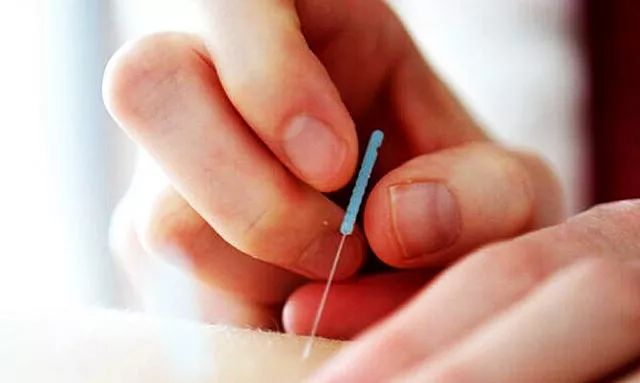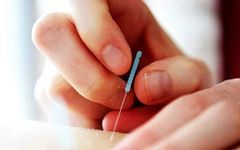The 24 Acupuncture Points for Bloodletting Therapy

Bloodletting therapy, also known as pricking therapy, is often performed using a three-edged needle, hence it is also referred to as three-edged needle therapy.
This therapy is applicable for conditions such as heat stroke, stroke with coma, shock, acute gastroenteritis, acute conjunctivitis, headache, neurodermatitis, acute tonsillitis, lumbar muscle strain, erysipelas, and abscesses. The pricking method can also treat certain chronic diseases, as well as postherpetic neuralgia, sore throat, trigeminal neuralgia, dry eye syndrome, and insomnia, making it widely used for many common clinical conditions.
Strict disinfection is crucial when performing bloodletting therapy. It should not be used on patients with blood disorders, and caution is advised for patients who are weak, anemic, or pregnant. The amount of blood drawn should not exceed 10 milliliters per session, except in special circumstances.
Currently, the commonly used needles are the three-edged needle and the thick hair needle. The three-edged needle comes in three sizes: large, medium, and small, while the thick hair needle is typically a 26-gauge half-inch needle.
There are four main methods:
(1) Point Pricking Method: First, press the selected area or acupoint to promote blood flow, then disinfect. Hold the pricking area with the left hand, while the right hand holds the needle with the thumb and index finger, and the middle finger rests on the lower end of the needle, exposing the tip by 0.1 to 0.2 cm. Quickly prick, then immediately withdraw the needle, gently squeezing around the puncture to allow a small amount of blood to flow, followed by applying a disinfected cotton ball to stop the bleeding. This method is widely used.
(2) Cluster Pricking Method: Using a three-edged needle, repeatedly prick a small area to induce slight natural bleeding. This method is often combined with cupping therapy, known as pricking and cupping therapy. It is mainly used for acute and chronic soft tissue injuries.
(3) Scattered Pricking Method: Similar to the cluster pricking method, but the area of skin pricked is larger, with greater distances between pricks. Depending on the size of the lesion, 10 to 20 pricks may be performed. This method is often used for larger lesions such as erysipelas and neurodermatitis.
(4) Selected Pricking Method: This is a development of the point pricking method, focusing on abnormal points on the skin related to certain diseases, which may present as tenderness, soreness, papules, or subcutaneous nodules. These points can appear in various locations on the body, commonly found on both sides of the cervical vertebrae from the seventh to the fifth. If papules are present, they may slightly protrude from the skin, resembling the size of a needle cap, and can be gray-white, dark red, brown, or light red. After disinfecting the area, the left hand presses and stabilizes the skin while the right hand uses a small three-edged needle to pierce the skin, going beneath the surface, tilting the needle slightly and gently lifting it to break several to dozens of white fibrous structures. After pricking, wipe away the blood, cover with a disinfected dressing, and secure it.

The earliest written records of bloodletting therapy in Traditional Chinese Medicine (TCM) can be found in the Huangdi Neijing (Yellow Emperor’s Inner Canon), stating, “Bloodletting pricks the small collaterals”; “When the blood is stagnant, it should be released to expel the bad blood.” It clearly states that bloodletting can treat conditions such as mania, headache, sudden deafness, heat asthma, and epistaxis. It is said that the physician Bian Que used bloodletting at the Baihui (Hundred Meetings) point to cure Prince Guo’s “corpse syndrome,” and Hua Tuo used needle pricking and bloodletting to treat Cao Cao’s “head wind syndrome.” By the Tang and Song dynasties, this therapy had become one of the major practices in TCM.
The New Book of Tang records that the imperial physicians of the Tang dynasty used bloodletting from the top of the head to cure Emperor Gaozong’s “dizziness and inability to see.” By the Song dynasty, this method was included in the acupuncture verses known as the Jade Dragon Poem.
During the Jin and Yuan dynasties, Zhang Zihe’s acupuncture medical cases in Rumen Shiqin primarily focused on the efficacy of needle pricking and bloodletting, believing it to be the quickest way to expel pathogens. By the Ming and Qing dynasties, bloodletting had become very popular, and the development of needles advanced rapidly, with the three-edged needle being categorized into coarse and fine types, making it more suitable for clinical use. The modern disposable pricking needle is also more suitable for clinical applications and self-treatment by the public. Yang Jizhou’s Acupuncture Great Compendium provides detailed records of bloodletting cases; Ye Tianshi used this therapy to cure throat diseases; Zhao Xueming and Wu Shangxian collected many bloodletting therapy cases in Chuan Ya Wai Bian and Li Yan Pian Wen.
Western classical medicine also has bloodletting therapy, based on the theories of Hippocrates and Galen from ancient Greece, who believed that human life depends on four bodily fluids: blood, phlegm, black bile, and yellow bile. These four fluids correspond to air, water, earth, and fire, which is similar to the Chinese concept of metal, wood, water, fire, and earth, with the addition of qi and the omission of metal and wood.
Ancient Greeks believed that blood was the dominant fluid among the four, and Galen believed that blood is produced by the body and often “excessive,” similar to the TCM perspective that “yang is often excessive while yin is often deficient.” Thus, TCM nourishes yin while ancient Western medicine resorted to bloodletting. Galen also connected the subcutaneous arteries and veins with various internal organs, known as “interior-exterior relationship,” suggesting that different diseases could be treated by bloodletting at corresponding vessels, for example, bloodletting from the right arm’s vein for liver diseases and from the left arm’s vein for spleen diseases.


1. Cerebral Hemorrhage (Stroke):
In cases of hemorrhage, the patient will likely be in a coma. Pricking the Yintang (Hall of Impression), Taiyang (Sun), Taichong (Great Rushing), and Shizhu (Ten Fingers) to draw 1-5 drops of blood can help promote awakening and reduce the severity of hemiplegia. Note: If a patient remains in a coma for more than 24 hours, the rate of hemiplegia is over 90%. If it exceeds 72 hours, there is a 100% chance of hemiplegic sequelae, which is extremely difficult to treat. Therefore, promoting the patient’s awakening as soon as possible is a crucial technique. Once the patient awakens, proceed to prick: Dazhui (Great Vertebra), Quchi (Pool at the Crook), Weizhong (Middle of the Weaving), as bloodletting here may lead to recovery.
2. Sciatica:
If the pain is related to the gallbladder meridian (outer thigh and calf pain), carefully examine the Yanglingquan (Yang Mound Spring) and Fenglong (Abundant Bulge) for any engorged vessels, as their presence often indicates a favorable outcome.
3. Boils and Carbuncles:
After bloodletting, treat the Xin (Heart) point.
4. Early Stage of Conjunctivitis, Stye Not Yet Pus-filled:
Prick the Taiyang (Sun) point to draw 7-9 drops of blood, and from the tip of the middle toe, draw 3-5 drops of blood. If bloodletting is performed today, recovery can be expected by tomorrow.
5. Severe Rheumatism in the Legs:
Prick 3 inches beside the third, fourth, and fifth thoracic vertebrae to draw blood, which can yield significant results. Many patients with severe conditions have recovered after just 1-2 sessions.
6. Gastric and Duodenal Ulcers:
Prick the blue veins from the Neiting (Inner Courtyard) to Jiexi (Stream of the River) and near the outer ankle. For gastric ulcers, look for blood vessels within 0.5 inches above and 2.5 inches below the Tiaokou (Opening of the Channel) point.
7. Chronic Nephritis:
(1) Bloodletting at the Ruyue (Scholar’s Back) point can help eliminate yellow fluid, leading to recovery. (2) Around the kidneys. (3) Bloodletting around the navel (do not prick the center).
8. Hepatitis Bloodletting:
Yangjiao (Yang Intersection), Zusanli (Leg Three Miles), Quxi (Curved Marsh), Yanglingquan (Yang Mound Spring), San Yin Jiao (Three Yin Intersection).
9. Cirrhosis with Ascites:
Use the acupuncture points for hepatitis plus: Shenshu (Kidney Shu), Yaoyangguan (Lumbar Yang Pass), Tiaokou (Opening of the Channel) (0.5 inches above and outside), Ganshu (Liver Shu).
10. Effective Points for Hemorrhoids:
(1) Chaojiao (Mouth Inside) – find the white spot, 1-3 sessions can lead to recovery. (2) For red, swollen, and ulcerated anal areas, bloodletting at Weizhong (Middle of the Weaving) can reduce pain.
11. Insomnia:
(1) Shenmen (Spirit Gate), Xingjian (Walking Between), Zusanli (Leg Three Miles). (2) Dazhui (Great Vertebra), Shenda (Spirit Path), Zhongwan (Middle of the Stomach), followed by cupping.
12. Cervical Spondylosis:
Pressing painful points, Tianzong (Heavenly Gathering), Jianzhen (Shoulder Needle), Chize (Cubital Marsh).
13. Chest Internal Injuries:
Dazhui (Great Vertebra), Jianjing (Shoulder Well), then treat the injured area.
14. Shoulder Periarthritis:
Shengu (Kidney Pass) (1.5 inches below Yanglingquan), Chize (Cubital Marsh), effective after one session.
15. Acute and Chronic Throat Diseases:
Dazhui (Great Vertebra), Erjian (Ear Apex), Yemai (Ear Back Vein), Shaoshang (Lesser Merchant), Quchi (Pool at the Crook), Taiyang (Sun), bloodletting can reduce pain.
16. Impotence:
(1) Bloodletting at Shenshu (Kidney Shu), Fuliu (Returning Current), Guanyuan (Gate of Origin), and cupping at Shenshu for 15 minutes. (2) Bloodletting at San Yin Jiao (Three Yin Intersection), Mingmen (Gate of Life), cupping at Shenshu, Xuehai (Sea of Blood).
17. Hypertension:
Taiyang (Sun), Dazhui (Great Vertebra), Erjian (Ear Apex), Yemai (Ear Back Vein), Quchi (Pool at the Crook) – bloodletting can lower blood pressure. Note: Do not drink water within one hour after bloodletting, as it may reduce effectiveness.
18. Asthma:
(1) Bloodletting at Dazhui (Great Vertebra), Pulmonary Shu (Lung Shu), Fengmen (Wind Gate), Gaomang (High Blind), Liexue (Intercostal Blood). (2) Zhufeng (Middle Palace), cupping at Dazhui for 15 minutes.
19. Hyperlipidemia:
Dazhui (Great Vertebra), Taiyang (Sun), Yaoyangguan (Lumbar Yang Pass), Weizhong (Middle of the Weaving), Quchi (Pool at the Crook).
20. Rheumatic Heart Disease:
Yangjiao (Yang Intersection), Chize (Cubital Marsh), Taiyang (Sun).
21. Eyelid Pterygium:
Shaoze (Lesser Marsh), Zhiyin (Reaching Yin), Erjian (Ear Apex), Dazhui (Great Vertebra), every other day for ten days.
22. Otitis Media:
Bloodletting at the outer ankle joint.
23. Epilepsy:
Formula 1: Taiyang (Sun), Quxi (Curved Marsh), Weizhong (Middle of the Weaving), Yangjiao (Yang Intersection).
Formula 2: Bloodletting at Shaoshang (Lesser Merchant), Renzhong (Human Center). Ganshu (Liver Shu), cupping at Dazhui for 15 minutes.
Formula 3: Identify painful points at the lower part of the cervical vertebra and use a plum blossom needle to prick for bloodletting.
24. Mental Illness:
Taiyang (Sun), Quxi (Curved Marsh), Weizhong (Middle of the Weaving), Shuchong (Art of Acupuncture), Yangjiao (Yang Intersection), Fenglong (Abundant Bulge), Xinyu (Heart Shu), followed by cupping after bloodletting.
The Secret of Bloodletting
For diseases that have been difficult to treat for a long time, when all methods have failed, one should look for engorged vessels at the ankles, elbows, wrists, and knees to perform bloodletting, which may yield unexpected results.
Bloodletting should generally not be performed at night; it is best done in the late morning or early afternoon.

